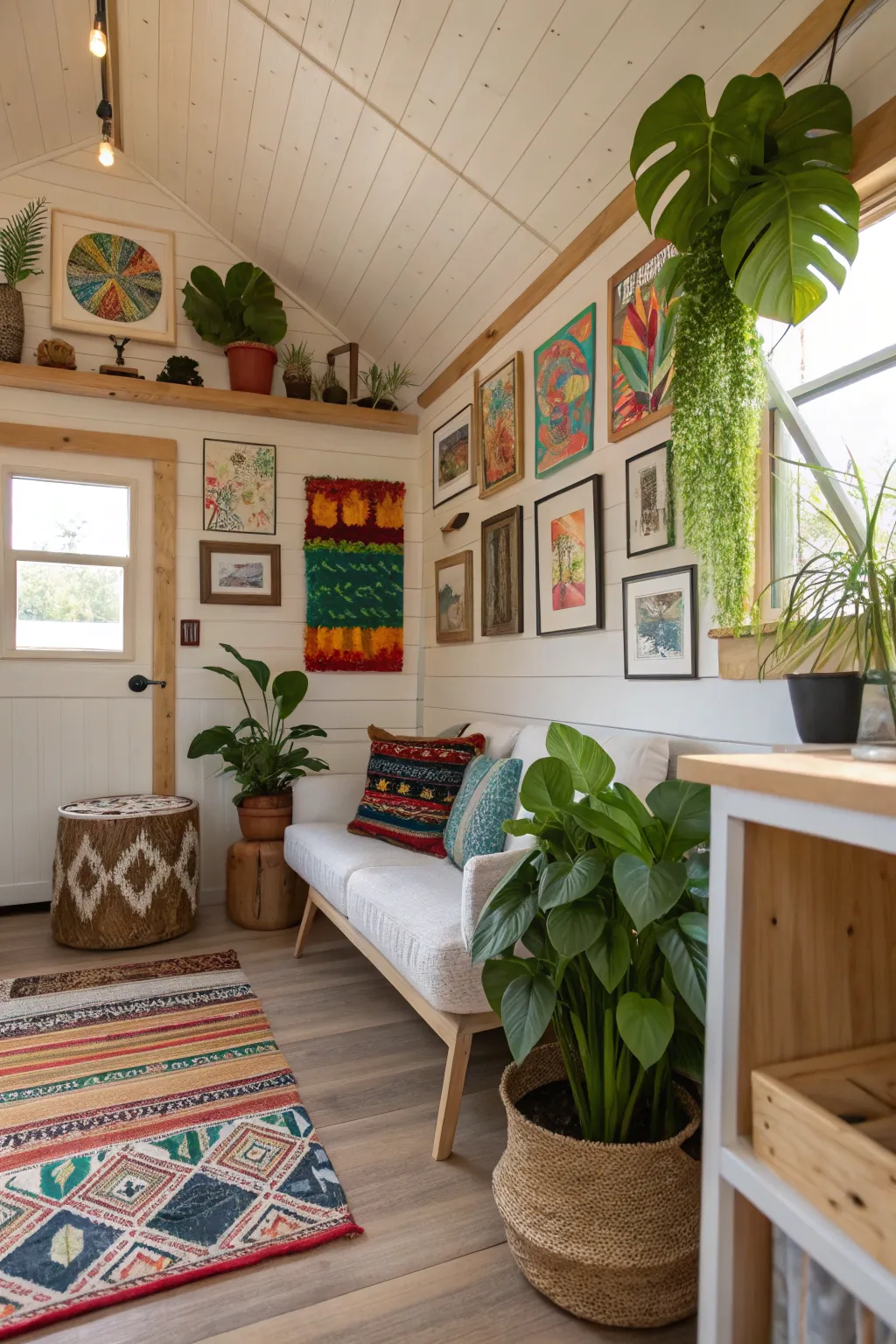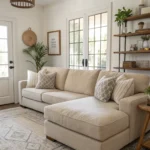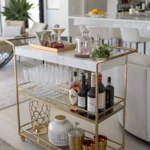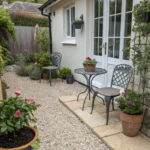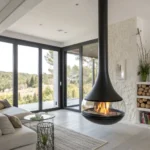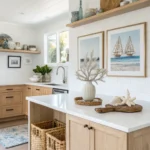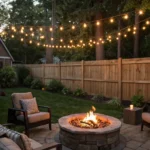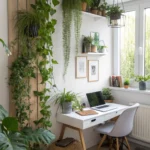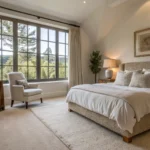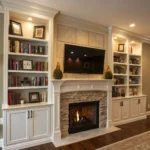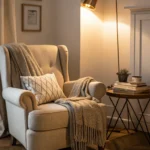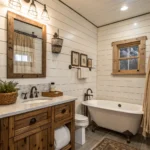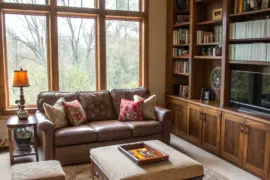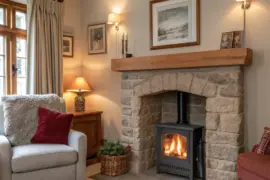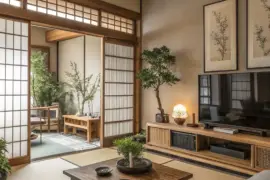Tiny House, Big Dreams
There’s something magical about stepping into a tiny house—where every detail counts and every square inch invites creativity. The excitement is real, but so is the challenge: How do you create a home that feels open, functional, and uniquely yours in a petite package?
Let’s roll up our sleeves and explore ways to make your tiny house shine! Whether you’re downsizing by choice or necessity, I’ll guide you through ideas that will help you craft a space that speaks to your soul and works hard for your everyday life.
1. How Can You Sleep High, Live Large? Loft Magic in Tiny Homes
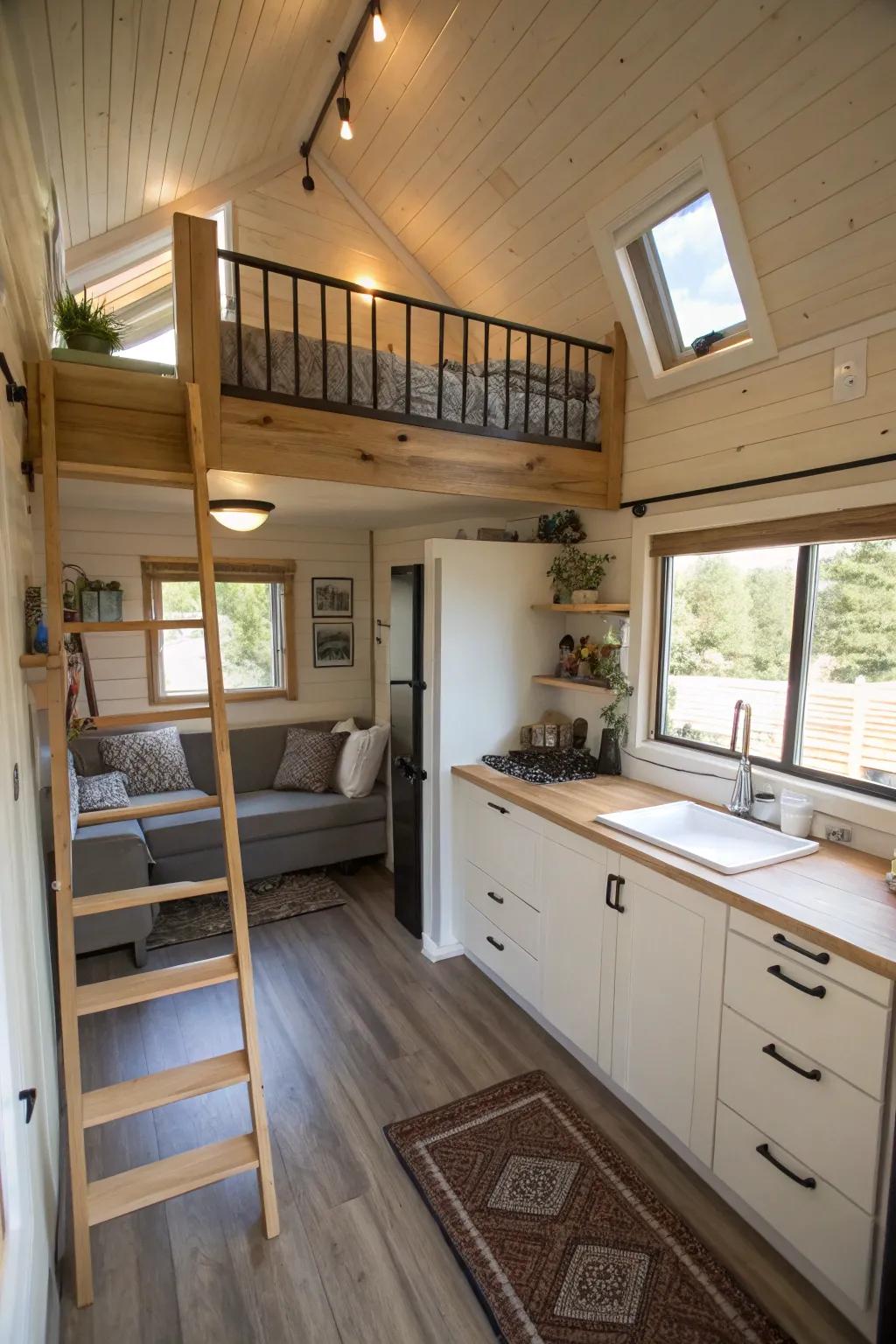
One of the most delightful things I’ve seen as a designer is how even the smallest of spaces can become expansive when you think vertically. I’ll never forget working with Linda and James. They dreamed of an airy retreat that wouldn’t eat up their living room real estate. Together, we designed a lofted sleeping area with a cozy ladder access—suddenly, their home felt twice as big!
By choosing a lofted layout, you’re freeing up valuable square footage for everything from yoga stretches to family dinners. But there are a few details to get right if you want your loft to feel like a dreamy escape rather than a stuffy cubby. My top choices for loft sleeping success are:
- Bamboo water fountain: Perfect for small spaces.
- Ceramic tiered fountain: Adds an elegant touch.
- Solar-powered water feature: Eco-friendly option.
Remember, it’s not just about climbing up and crashing down—it’s about making your sleeping spot feel like a world apart. Want to add a dash of personality? Dress your nook with soft lighting, a stack of favorite novels, or a lush hanging plant.
Loft living is a little like sleeping in the clouds—just don’t forget to look down and smile at all the space you’ve saved.
Explore these options:
2. Opt for Light Colors to Create a Bright Ambiance
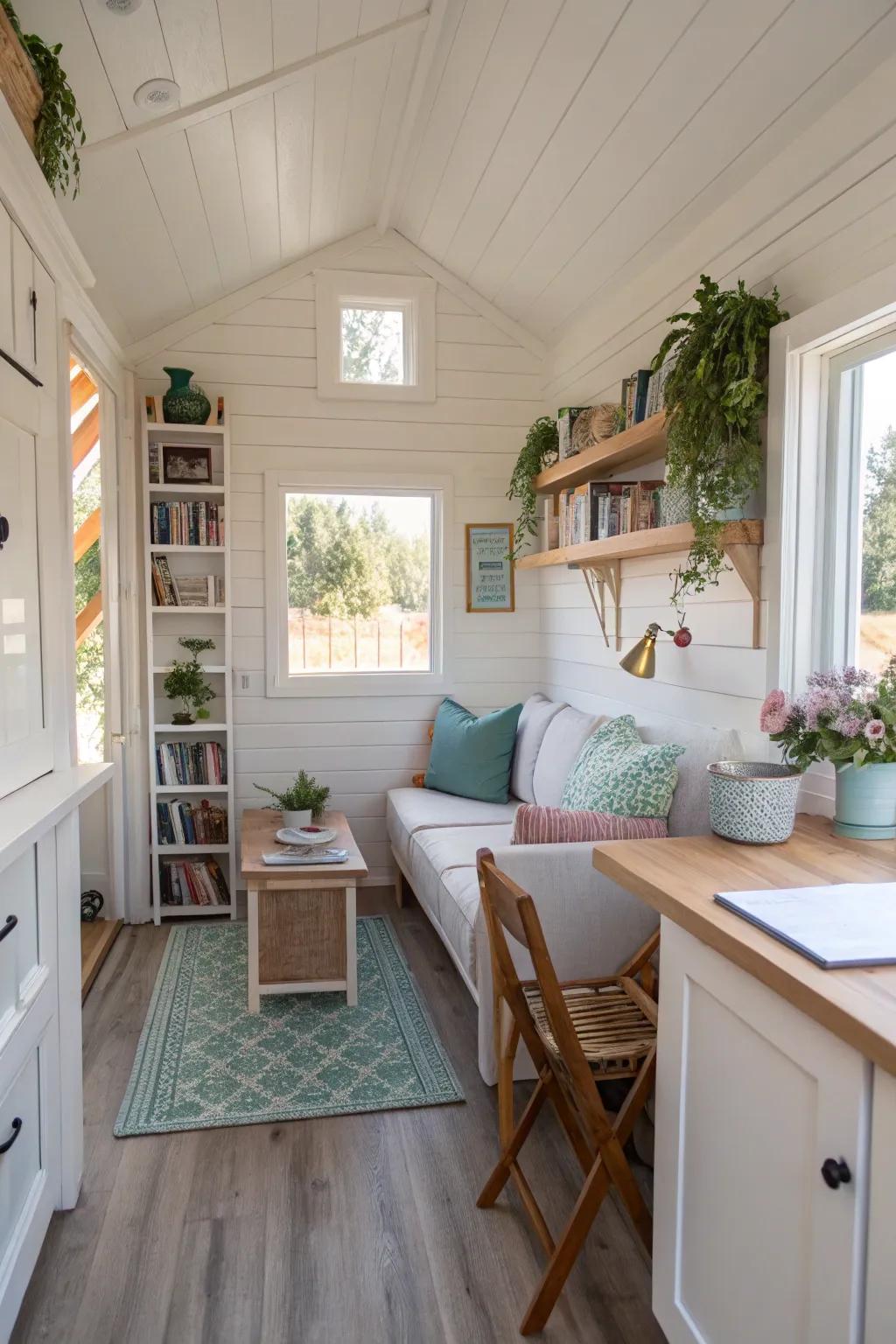
Light colors can make any space feel larger and more inviting. I often recommend using a light color palette to keep the interior bright and enhance the perception of space in tiny homes.
Might be a good match:
3. Elevate Everything
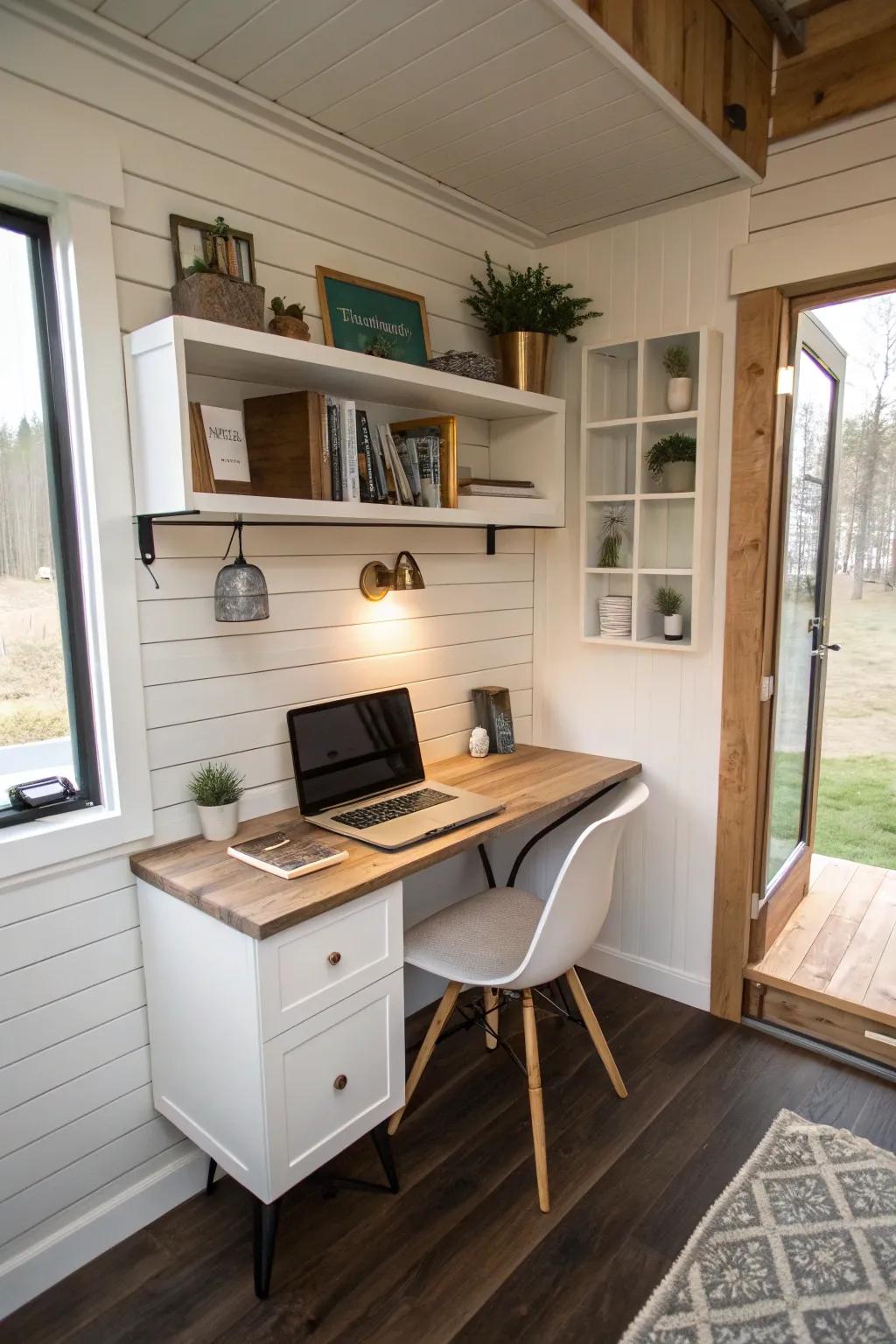
When you’re working with a tiny house, every inch matters—and every surface has to hustle a little harder. I absolutely love using wall-mounted furniture because it’s like hitting the refresh button on your floor plan. Suddenly, you’ve got room to breathe, move, and live. Think about it: no more bulky legs or clunky supports getting in the way. Instead, you create the illusion of floating essentials, which feels light and oh-so-modern.
Here’s how I make wall-mounted pieces work overtime in small interiors:
- Go for a floating desk that disappears when not in use, making your living area feel twice as big.
- Use wall-mounted cabinets above eye level for storing items without crowding your flow.
- Install adjustable wall shelves to customize storage for books, plants, or even kitchen supplies.
Not long ago, I worked with a client named Mia on her compact studio. She was convinced she needed to sacrifice workspace for sleeping space, but we designed a wall-mounted desk that folded down from the wall—just big enough for her laptop and a cup of chamomile tea. We paired it with floating cabinets above, freeing up room for yoga stretches right in her living area!
There’s a certain magic in seeing a room open up, simply because you’ve lifted furniture off the floor.
If you’re craving both style and freedom in your tiny space, hanging your essentials up high is a small change that makes a world of difference.
A few suggestions:
4. Hide and Seek: Smart Storage Solutions Revealed
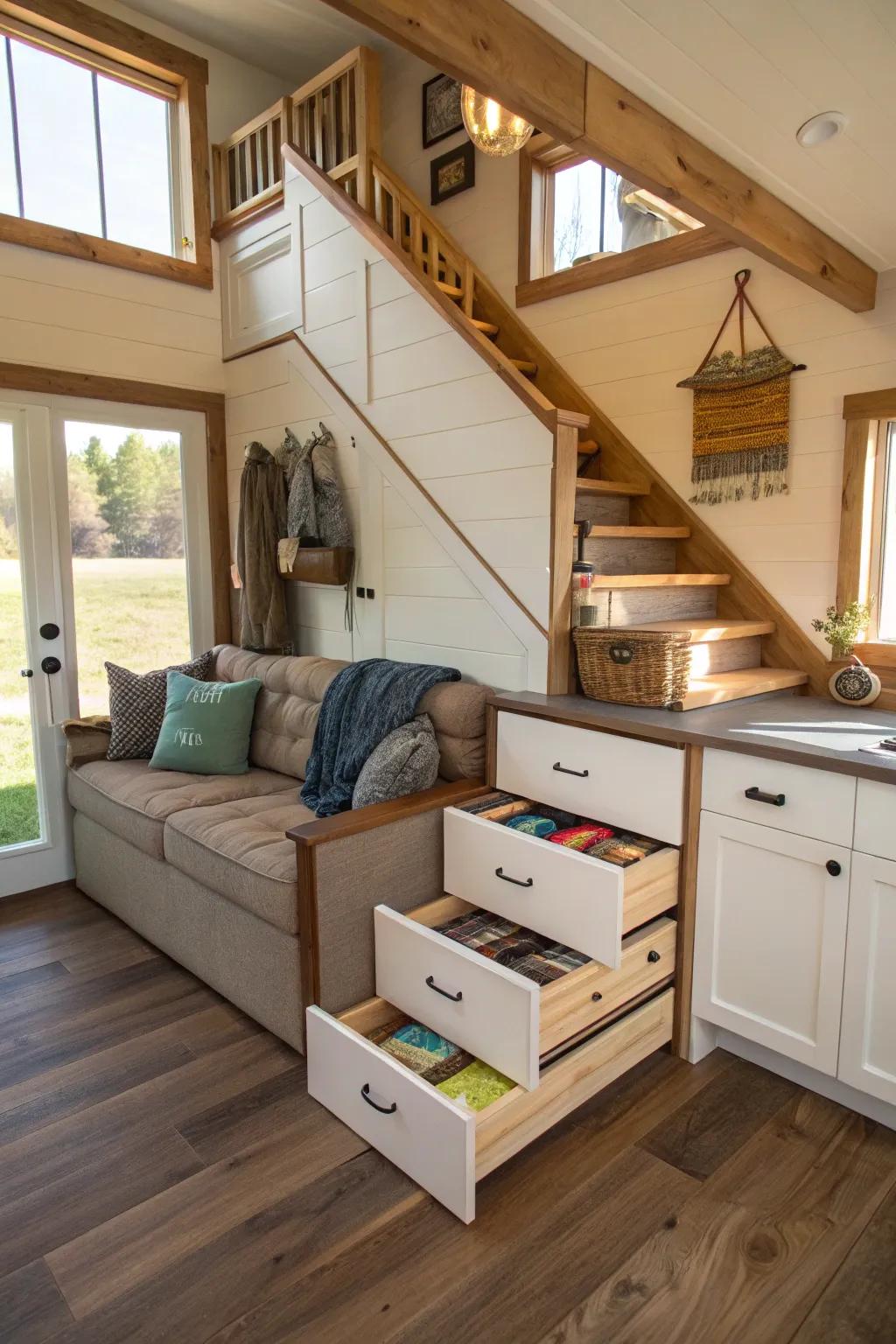
When space is at a premium, every nook is an opportunity. Concealing storage in unexpected places isn’t just a clever trick—it’s a lifesaver for keeping your tiny house organized and serene. Have you ever opened a door and wished you could stash away everything in sight?
- Slide-out drawers under the stairs are perfect for shoes, cleaning supplies, or off-season linens.
- Opt for seating solutions, like a convertible sofa, that lift or open to reveal deep storage inside.
- Build a storage bench along a window wall for a spot that’s both comfy and practical.
I once worked with Karen and Luis, who were fed up with kitchen gadgets piling up on every surface. We added pull-out drawers beneath their staircase, and suddenly spatulas and potato mashers disappeared—leaving only calm, clean countertops.
Look for those hidden pockets of potential in your own home. The more items you tuck away, the more open and inviting your tiny house will feel.
Useful items to consider:
5. Softening Spaces and Stopping Clutter: The Power of Fabric Panels
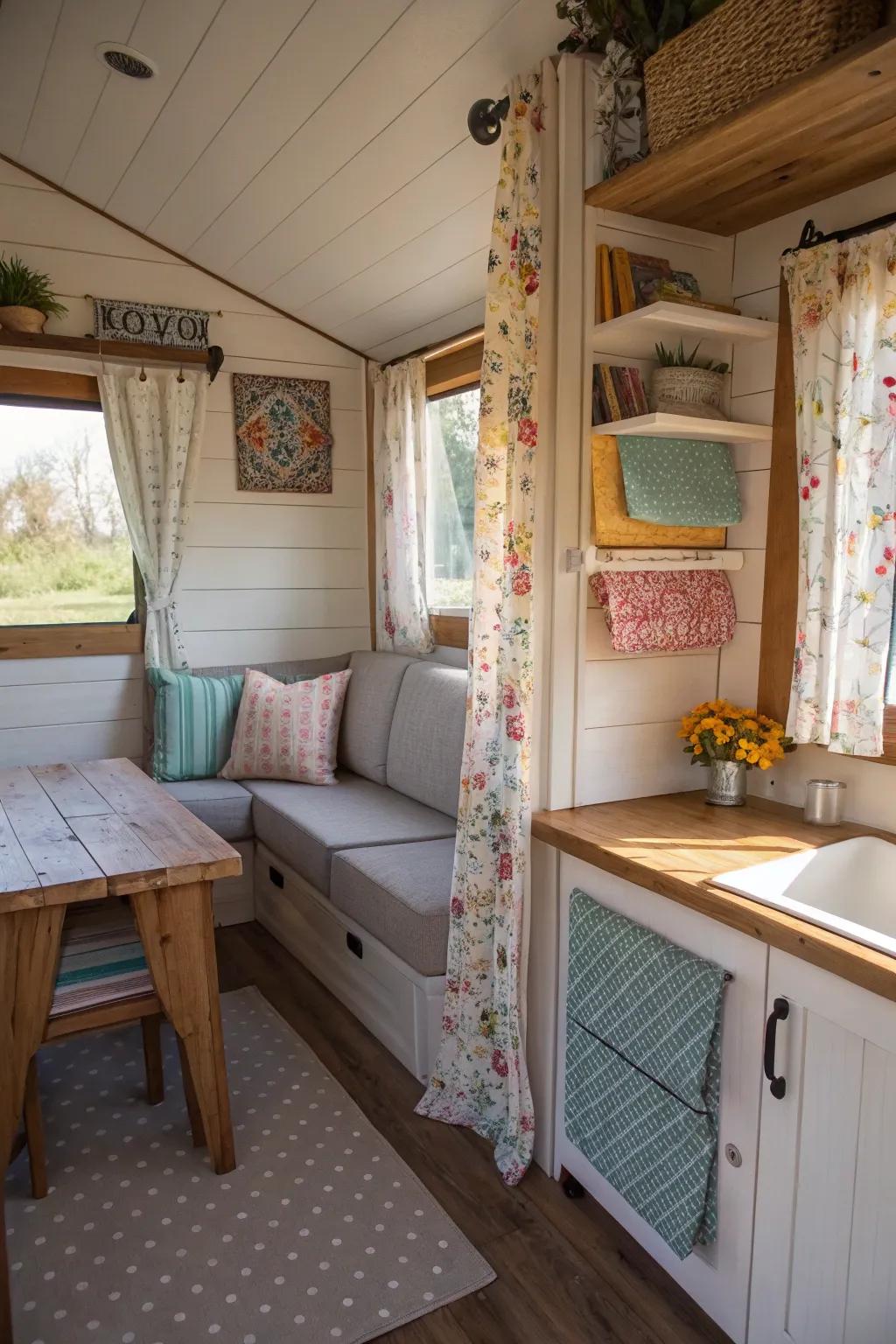
When it comes to tiny houses, every inch counts—but so does the mood you set. One of my favorite tricks for keeping a small space serene and organized is using fabric or panels to instantly hide away clutter. Fabric softens a room, absorbs sound, and adds a comforting layer that makes your retreat feel more like home.
Do you ever wish you could whisk away the visual chaos of open shelves or utility nooks, without sacrificing accessibility? With fabric panels, you absolutely can. In fact, they offer an effortless way to create zones, subtly mask storage, or introduce color and texture—all without major renovations. Here are three creative ways to put this idea to work:
- Hang floor-to-ceiling panels over a row of open shelves to conceal everything from pantry goods to books.
- Use a tension rod and a draped textile to privatize a corner workspace during off-hours (even a small nook feels like a dedicated room).
- Select patterned or natural fabrics that echo your style—be it minimalist linen or vibrant prints—to give personality as you cover up.
I once worked with the Thompsons, a fun-loving family who turned their tiny house into a vibrant oasis. They loved displaying their vintage kitchenware, but found it tricky to keep everything tidy for guests. Together, we chose a cheerful floral fabric to hide open shelving, instantly calming the kitchen. The fabric brought both order and a burst of personality.
Hiding clutter doesn’t mean hiding your style—choose panels that truly reflect you, and let your tiny home shine with both order and beauty.
Check if these fit your needs:
6. Is Less Truly More When Space is Tight?
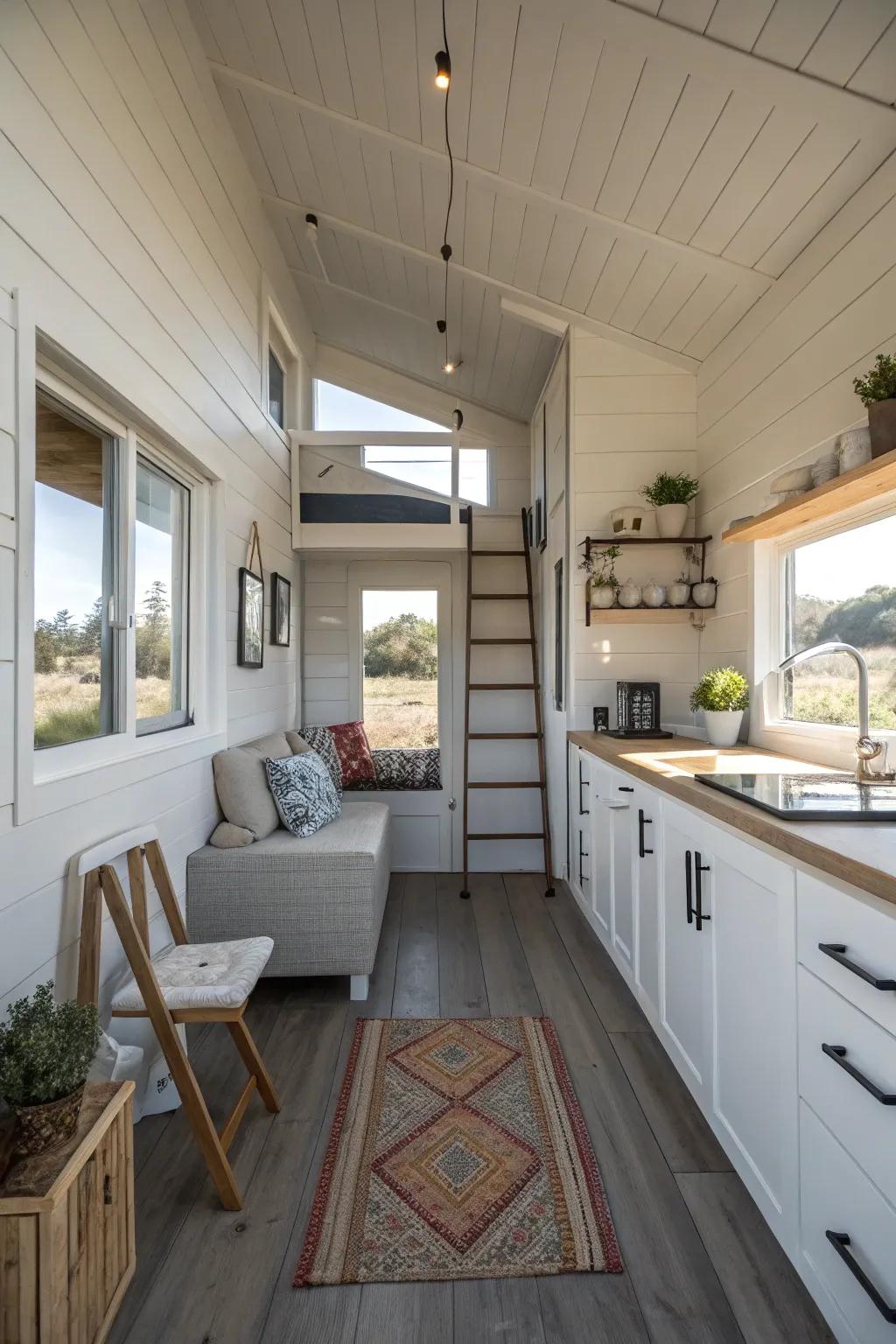
When I first adopted a minimalist design approach in a client’s tiny home, I watched the transformation ripple through their daily life. Sarah, an artist with a passion for color, had filled her space with treasures—but felt boxed in. By editing her belongings and choosing a few bold, beautiful pieces, we created a soothing home that reflected only what she loved.
I encourage you to start small with two simple habits:
- Give yourself a five-minute tidy-up each morning; clear counters do wonders for the mind.
- Try limiting display items to what you cherish most—let everything else live out of sight or find a new home.
Minimalism isn’t about coldness; it’s about clarity. When you allow yourself space to breathe and move, your tiny house feels more expansive and welcoming than you’d ever expect.
Tranquility often arrives where clutter ends.
You might like:
7. What If You Rearranged Everything?
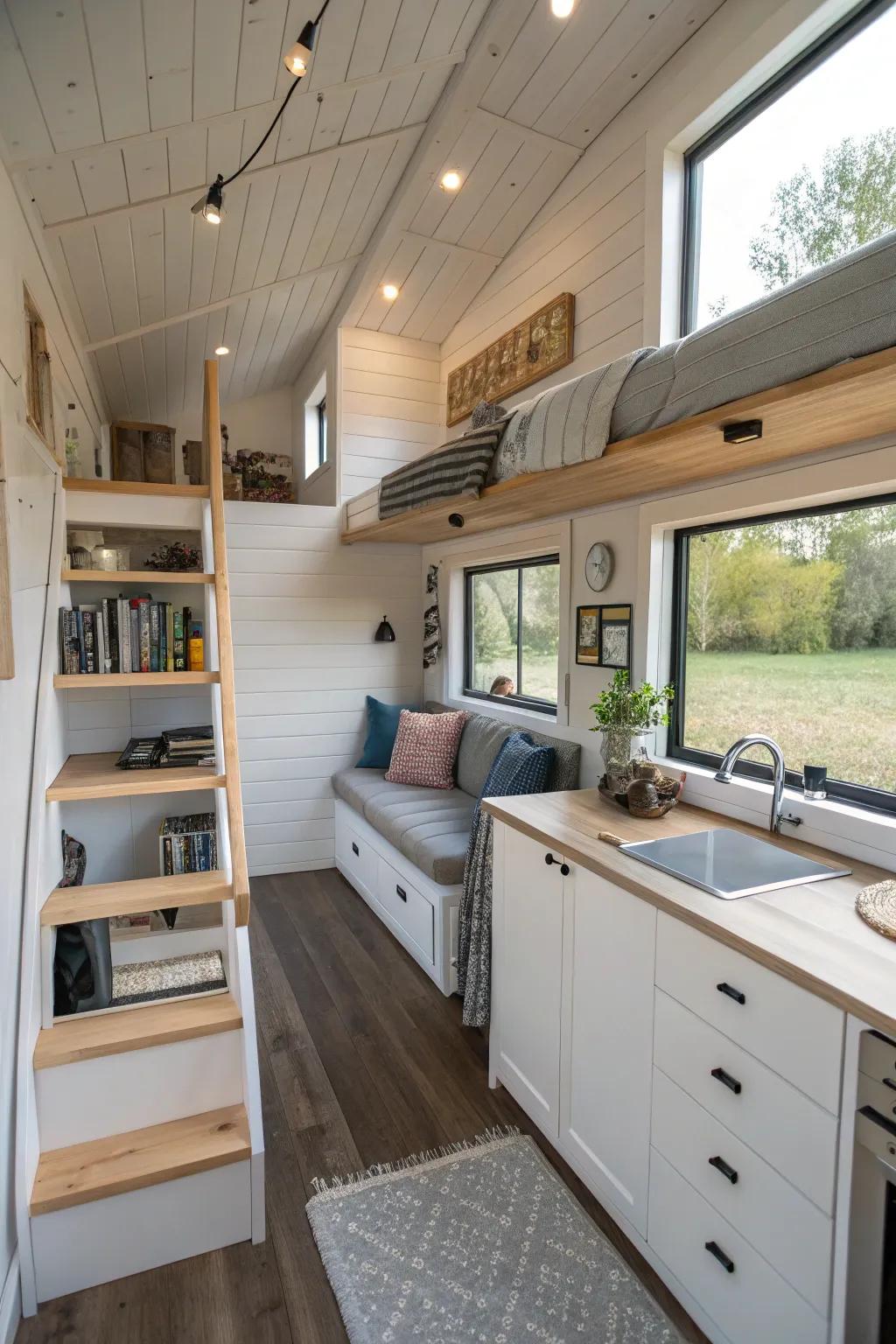
Every tiny home has its own flow—and sometimes, the best way to discover it is to toss conventional arrangements out the window.
Let the architecture, your habits, and even your favorite sunbeam guide your choices.
You might be surprised by what works when you trust your instincts over the usual rules.
Could a sofa go beneath a window, or a table float diagonally in a corner? Sometimes the quirkiest layouts spark the most joy.
Find your own formula—there’s beauty in every experiment.
These products might be useful:
8. Make Storage Shine!
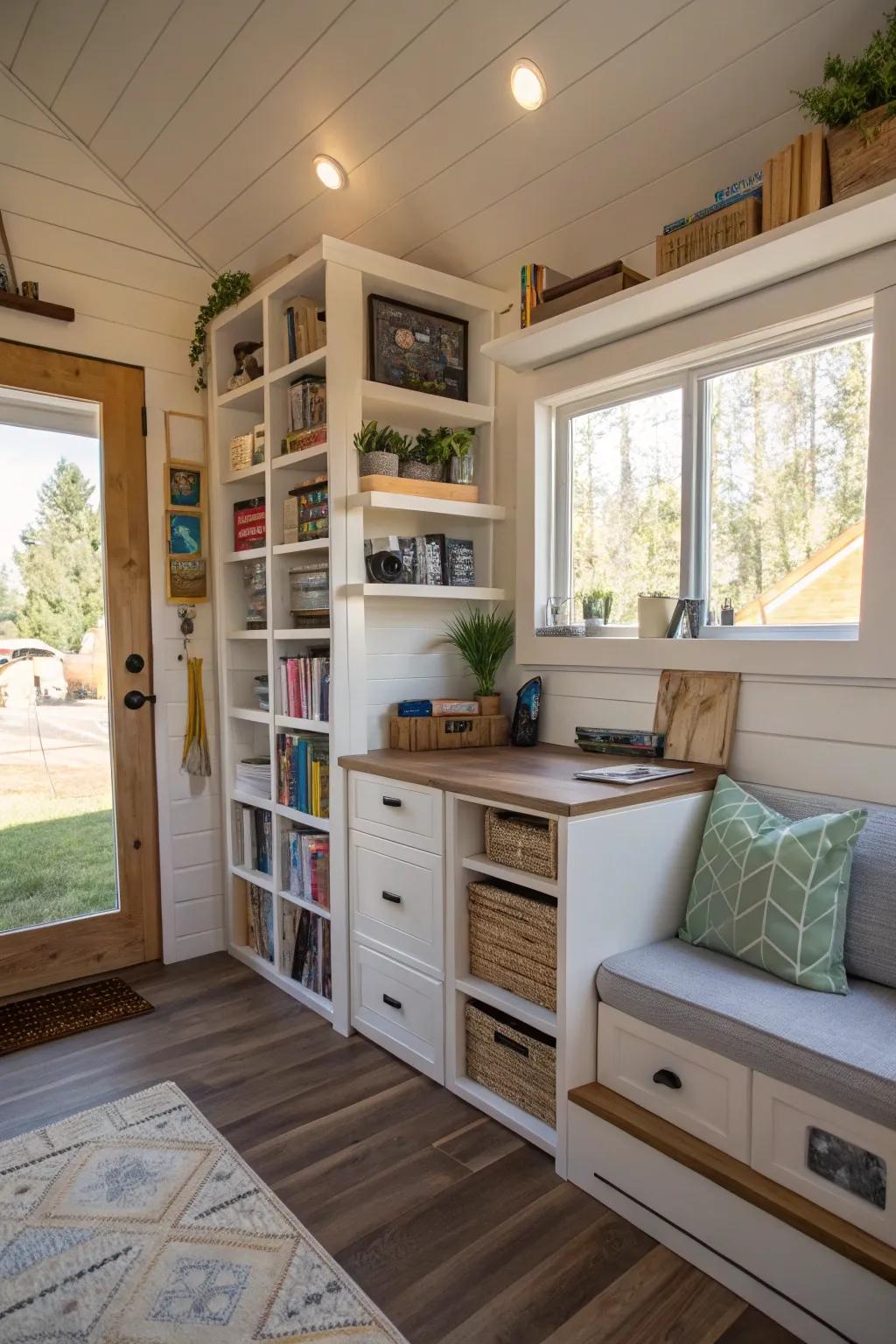
Rethink the box—open shelving or creative baskets are so much more than practical. Let your storage double as display. Every piece you choose should feel both functional and beautiful.
Sometimes, it’s the small touches that turn clutter into art.
Check these products out:
9. Why Open Kitchens Feel Bigger
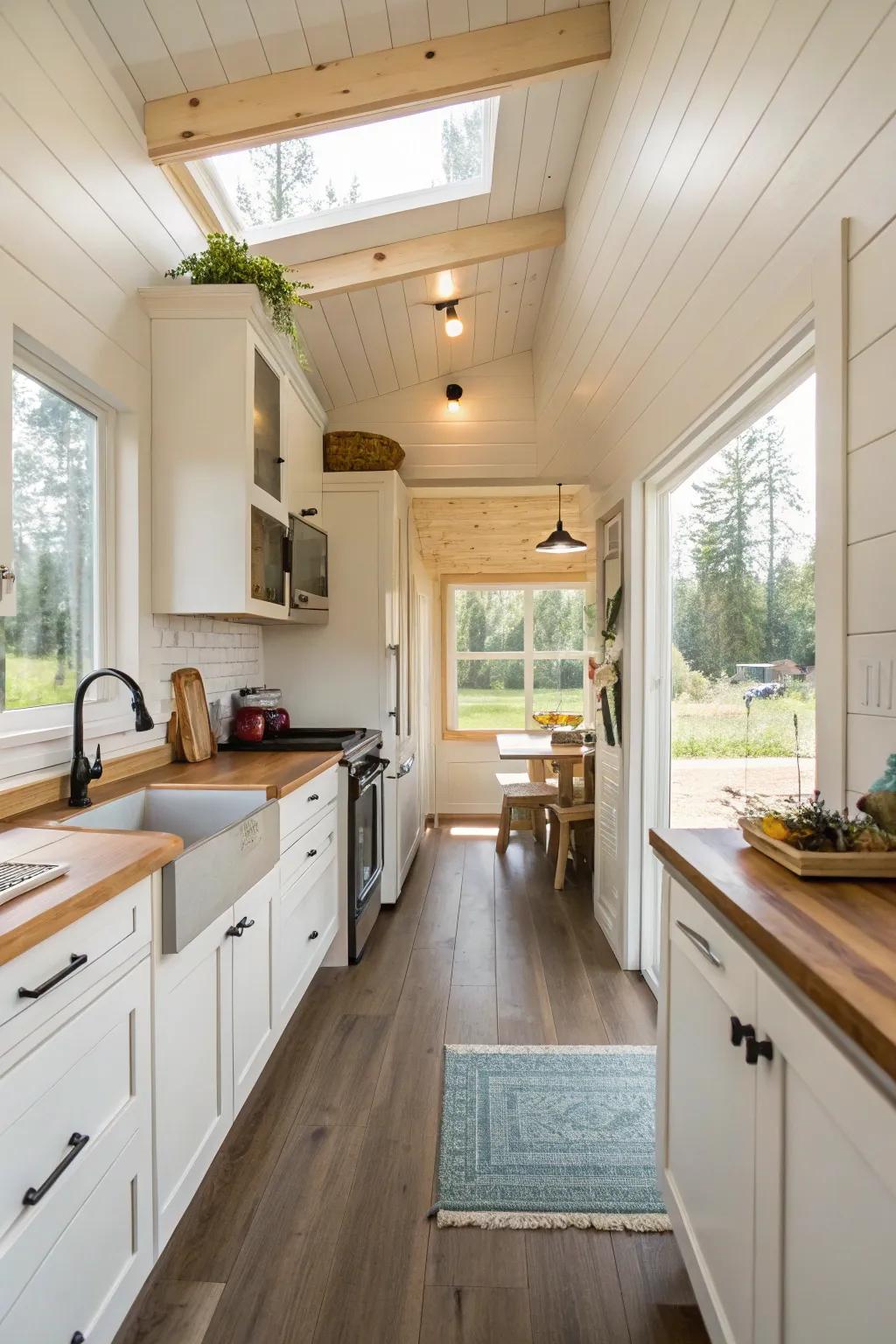
Skipping those upper cabinets in your tiny kitchen might feel like a bold leap, but it’s one that pays off in openness—and inspiration. With nothing blocking the walls, your kitchen will breathe, and you’ll be free to dream up clever storage solutions elsewhere. Try it and see just how expansive a small kitchen can feel.
Less can truly be more.
You might give these a try:
10. Nature’s Touch: Bringing Warmth Into Small Spaces
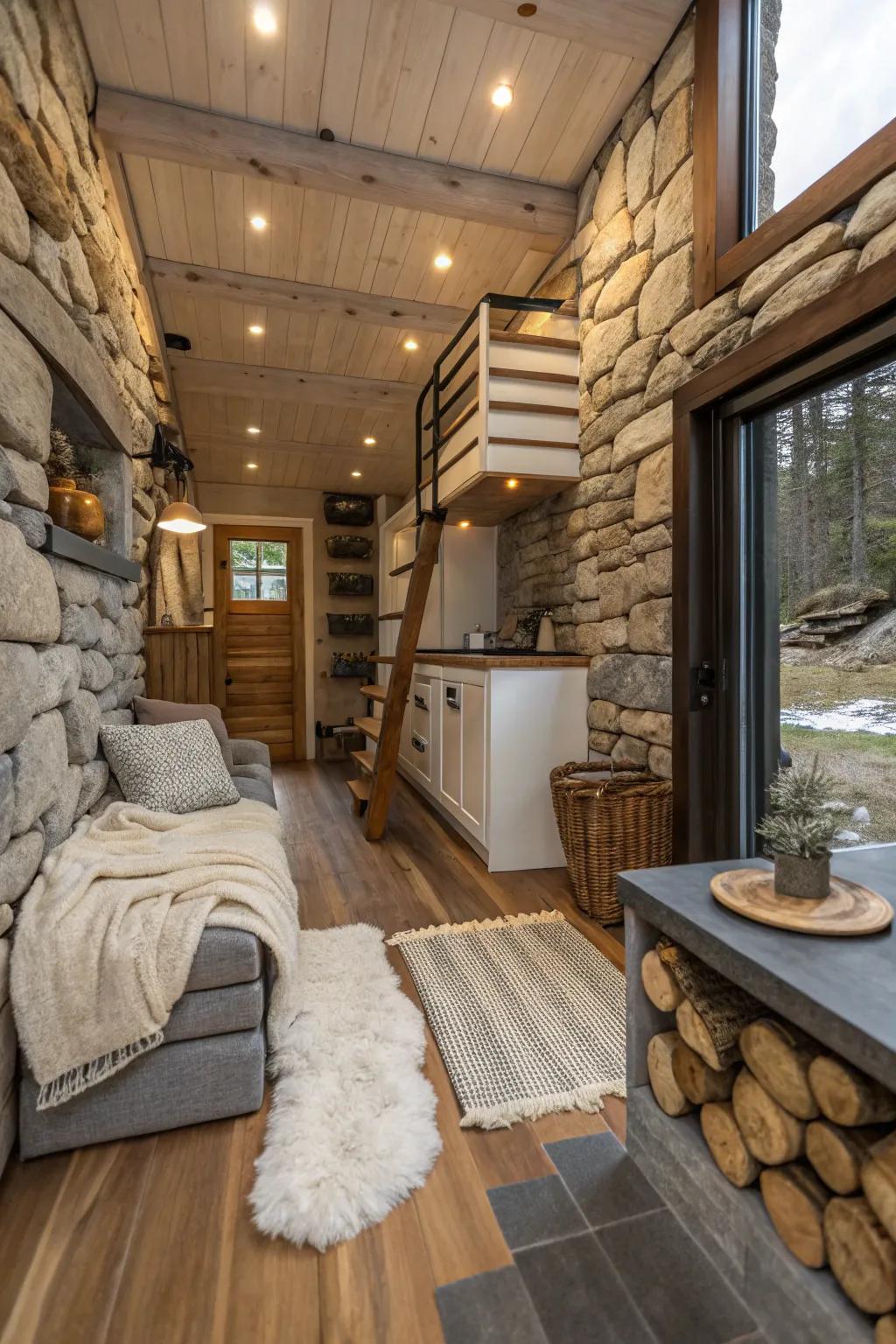
A tiny house can be cozy, but sometimes it craves a little extra comfort—a sense of connection to the outdoors. Over time, I’ve learned that nothing grounds a space quite like natural elements. Think stone, wool, wood, jute—materials that carry history and texture into our modern lives.
- Bring in stone accents for depth and beautiful visual interest.
- Use wool throws or pillows for softness and tactile pleasure.
- Layer an earthy jute rug for organic warmth underfoot.
- Display natural wood pieces—like small stools or trays—for instant coziness.
When I worked with Clara and Max, their main wish was to transform a stark, all-white living room into a place they genuinely looked forward to spending time in each night. I started by adding a stone accent along one wall, draped a chunky wool blanket over their sofa, and layered a natural jute rug on the floor. The room immediately gained a new heartbeat—it felt alive, inviting you to kick off your shoes and breathe deeper.
Sometimes, all it takes is a single well-chosen element—a woolen throw or a piece of raw wood—to shift the entire mood of your space. Have you ever noticed how a room changes when you add something real, something with a story?
Let your tiny home embrace the outside world, one earthy texture at a time.
Some ideas to consider:
11. Wood Accents: Creating Warmth Without Crowding Your Space
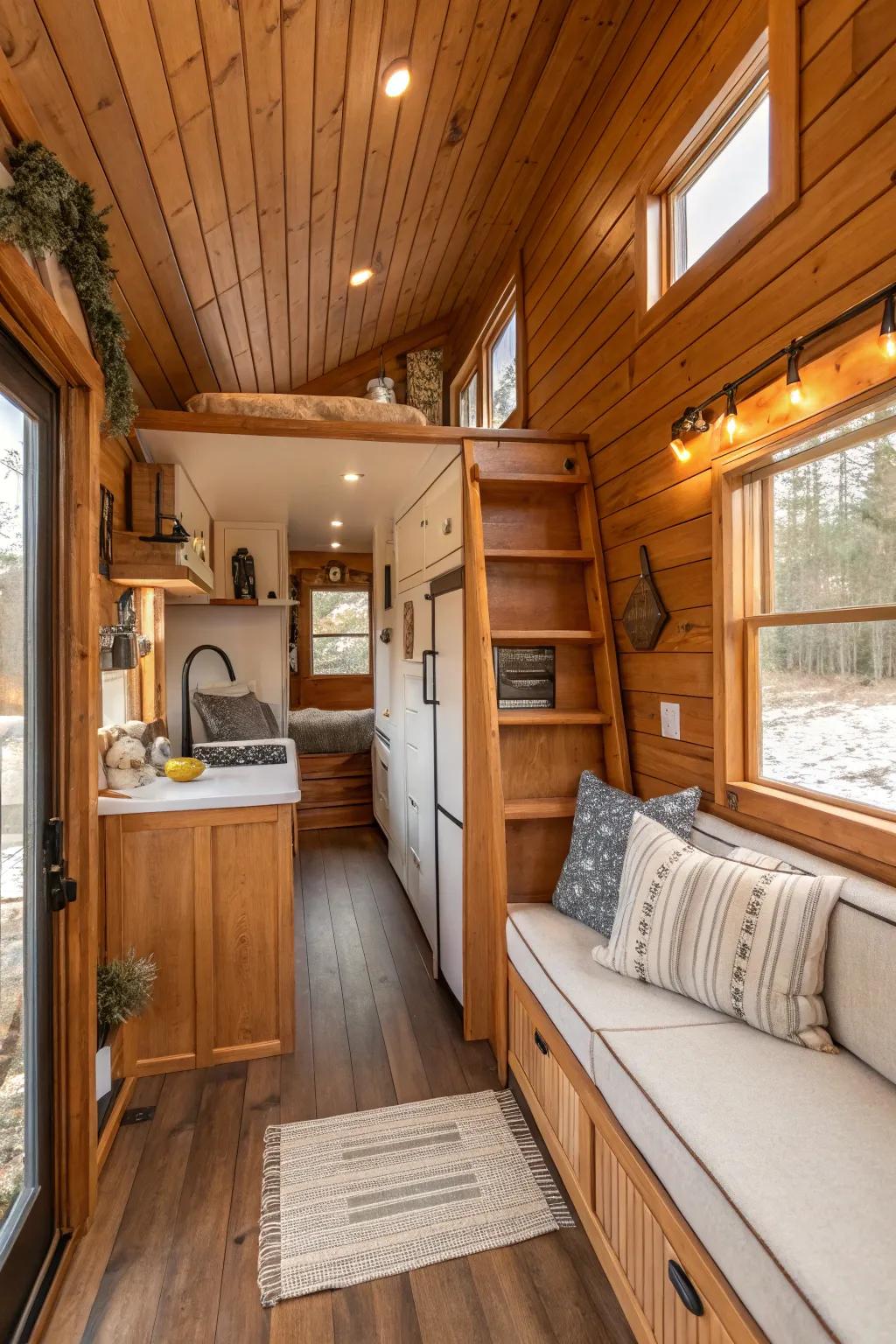
Wood brings a comforting embrace to any tiny home—think of it as nature’s way of whispering, “Relax, you’re home.” I find that using wood accents infuses a sense of coziness and authenticity that paint and metal just can’t match. Whether you crave modern minimalism or rustic retreat vibes, smart wood touches can anchor your design and make your space feel more welcoming.
Here are a few of my favorite ways to bring natural wood elements into a compact space:
- Self-adhesive wood paneling: Instantly transforms bare walls without heavy installation.
- Floating wooden shelves: Add function and farmhouse charm with minimal visual weight.
- Hardwood flooring planks: Durable, timeless, and they age with character.
Simple touches matter most in small homes. Even a narrow wood ledge or reclaimed wood headboard can make your space feel like a woodland escape.
Try these:
12. Small Can Be Mighty: Kitchens That Work Wonders
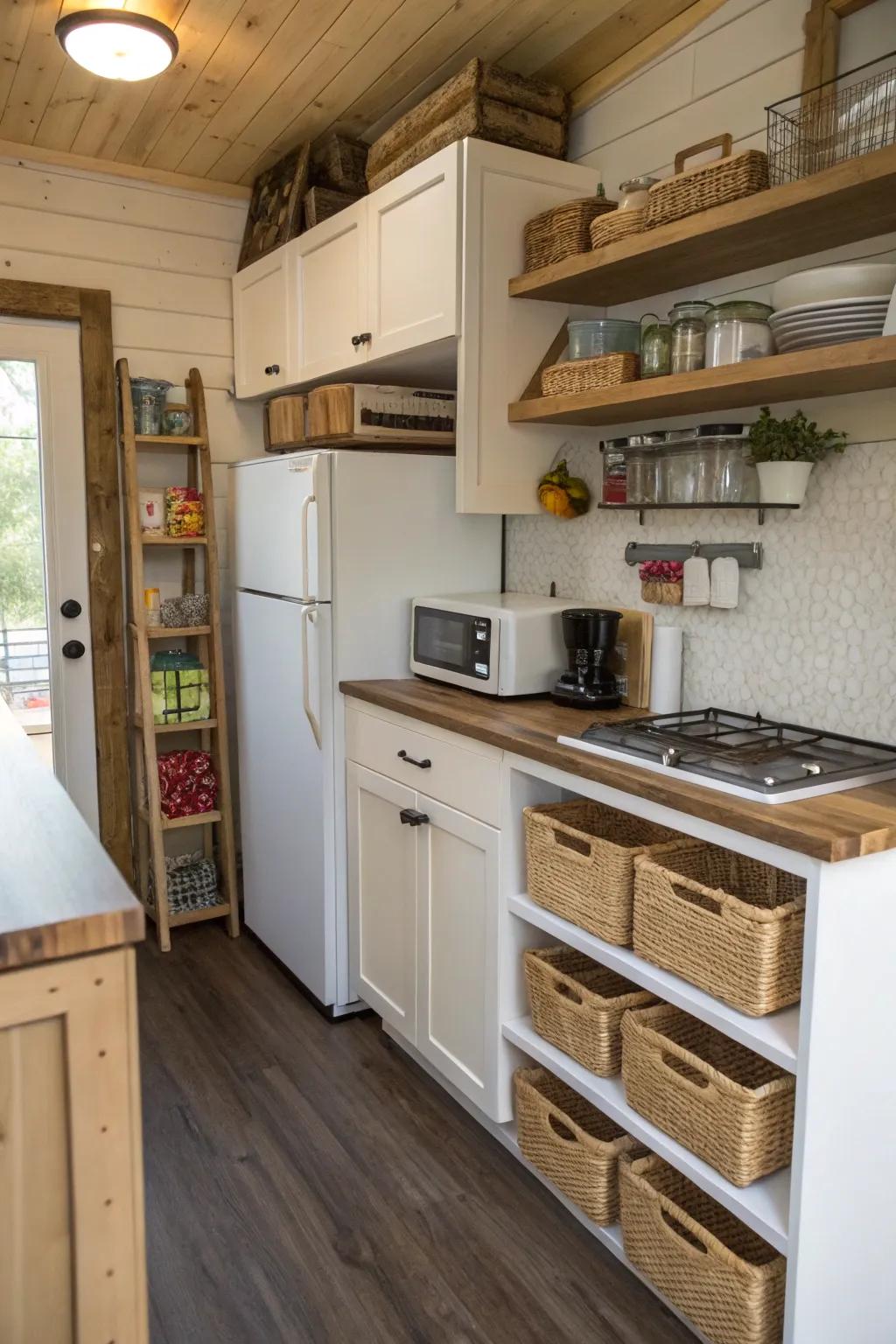
When you’re working with a petite kitchen, it’s easy to feel like you have to choose between form and function. But what if you could have both?
The best tiny house kitchens are all about smart choices: go for multi-purpose storage, tuck-away appliances, and flexible prep zones.
Ever considered a magnetic knife rack instead of a bulky block, or hanging your utensils to keep counters clear? Sometimes, it’s the little swaps that make the biggest difference.
Your kitchen doesn’t need to be sprawling to feel inviting.
It just needs to work for you.
Items that may come in handy:
13. Let There Be Light!
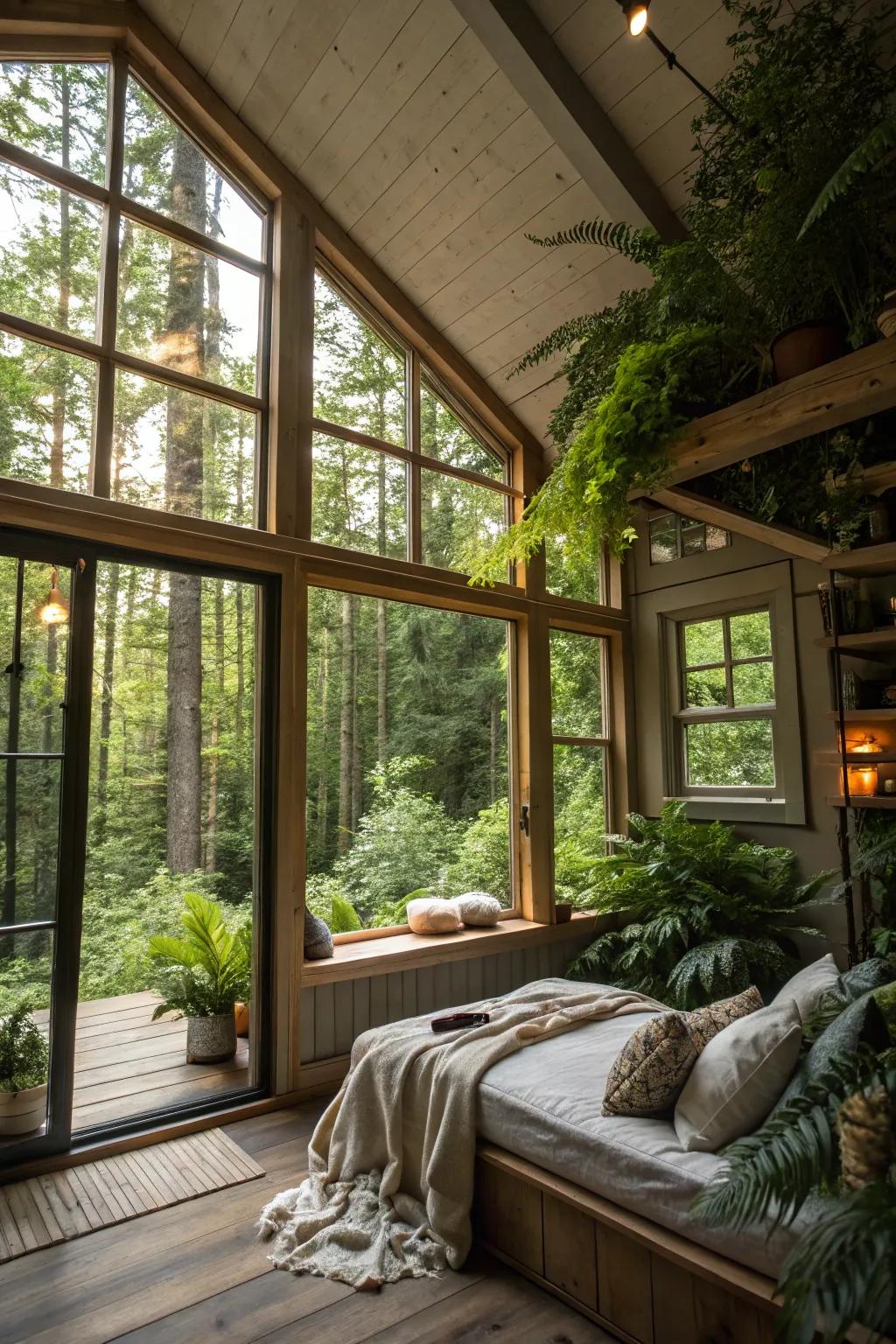
Flood your home with sunlight and watch it transform.
Large windows don’t just make a tiny house look bigger—they feel like a daily invitation to breathe and dream.
Isn’t it amazing how a single sunbeam can lift your mood or spark inspiration?.
A few choices to try:
14. Create a Jewel-Box Bathroom Experience
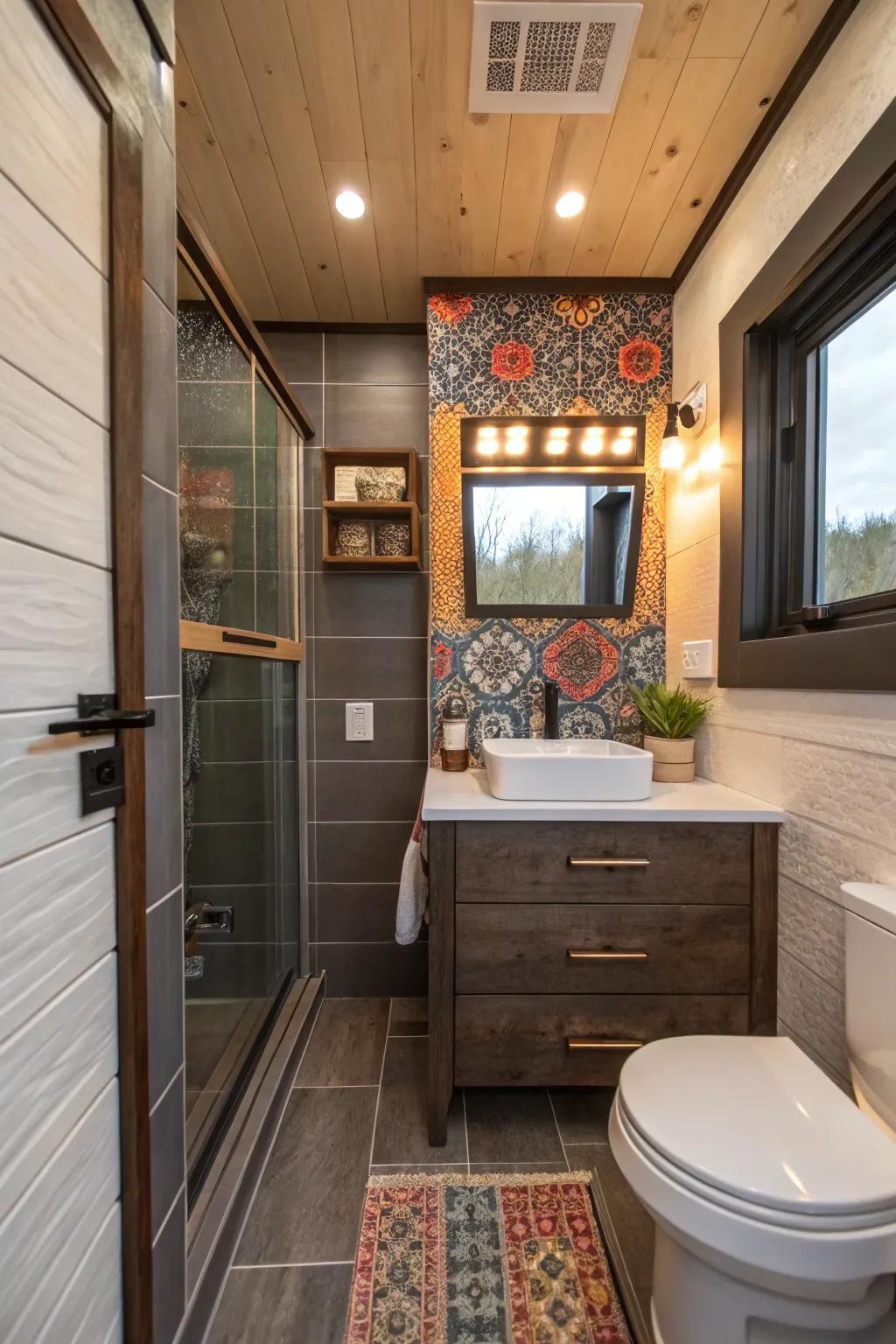
Make your bathroom a tiny but luxurious escape. Use bold tiles or stunning fixtures to turn this small space into a jewel-box experience that you and guests will adore.
Consider these options:
15. Discover the Undercover Hero of Small Space Living: The Storage Bench
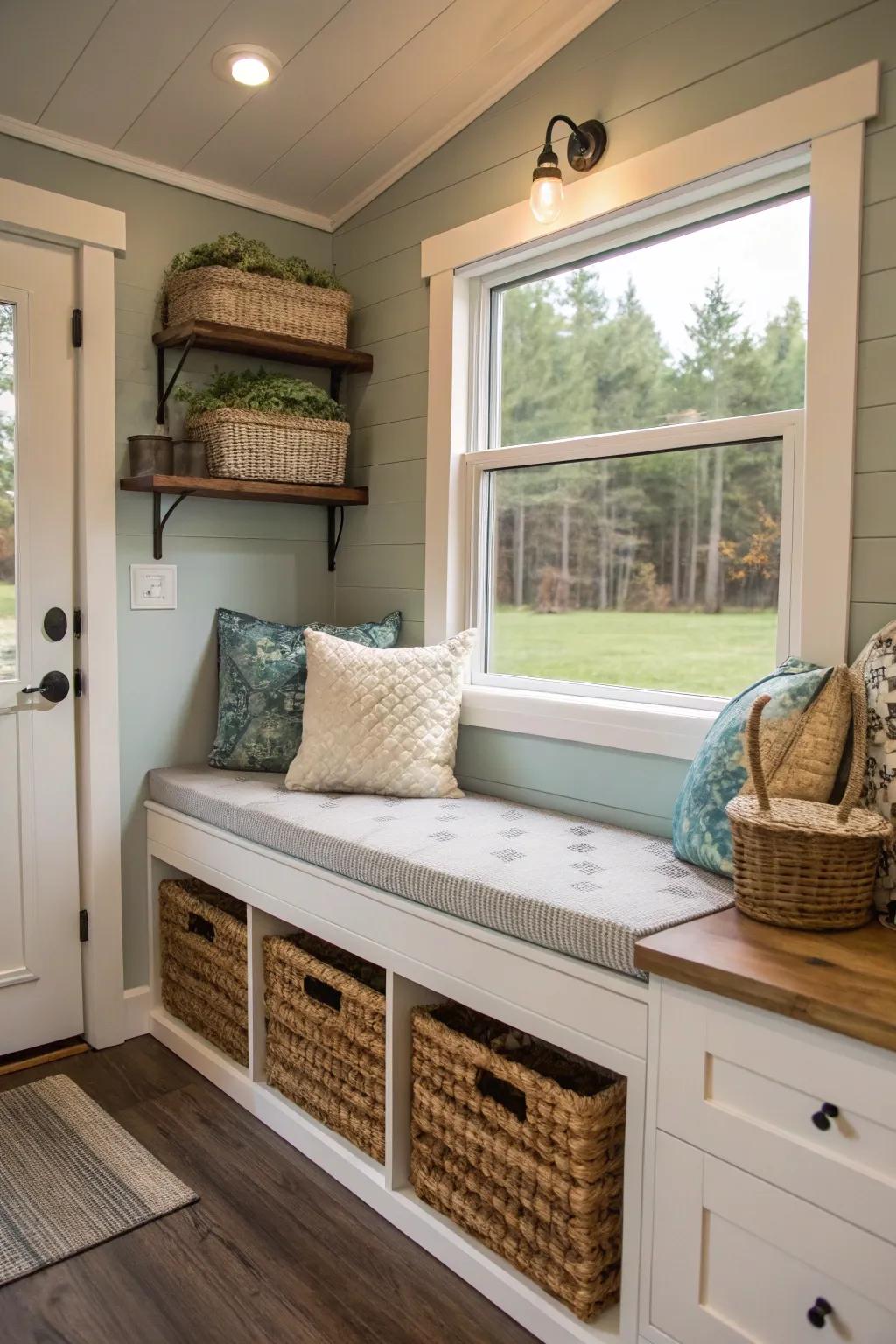
In the world of tiny home design, some solutions are so simple, they almost seem like magic. That’s exactly how I feel about a sturdy storage bench. With just one piece, you can transform a cluttered entryway, a breezy reading nook, or the foot of your bed—while tucking away life’s not-so-pretty essentials.
Let me share four ways a storage bench can become your new favorite multitasker:
- Creates extra, comfortable seating for guests or family, perfect for gatherings in small spaces.
- Offers hidden storage for shoes, bags, winter hats, or even board games—stash-and-dash never looked so good!
- Doubles as a stylish display ledge for plants, books, or cozy throw pillows.
- Makes a handy dressing spot in bedrooms or mudrooms (trust me, you’ll love not having to perch on the edge of the bed).
When I helped the Martins—parents of two energetic kids—redesign their micro-home, a custom storage bench was our MVP. We built it right under a big window, so it became the go-to spot for homework, morning coffee, and scenic daydreaming. Inside? Every sneaker, soccer ball, and backpack found its own tidy home.
It’s not just furniture—it’s a secret weapon against clutter.
If you’re dreaming of a home that feels serene and unburdened, don’t overlook this classic. Add a cushion for color and comfort, and let your bench quietly conquer the chaos.
Give these a look:
16. How Can Every Inch Work Harder For You?
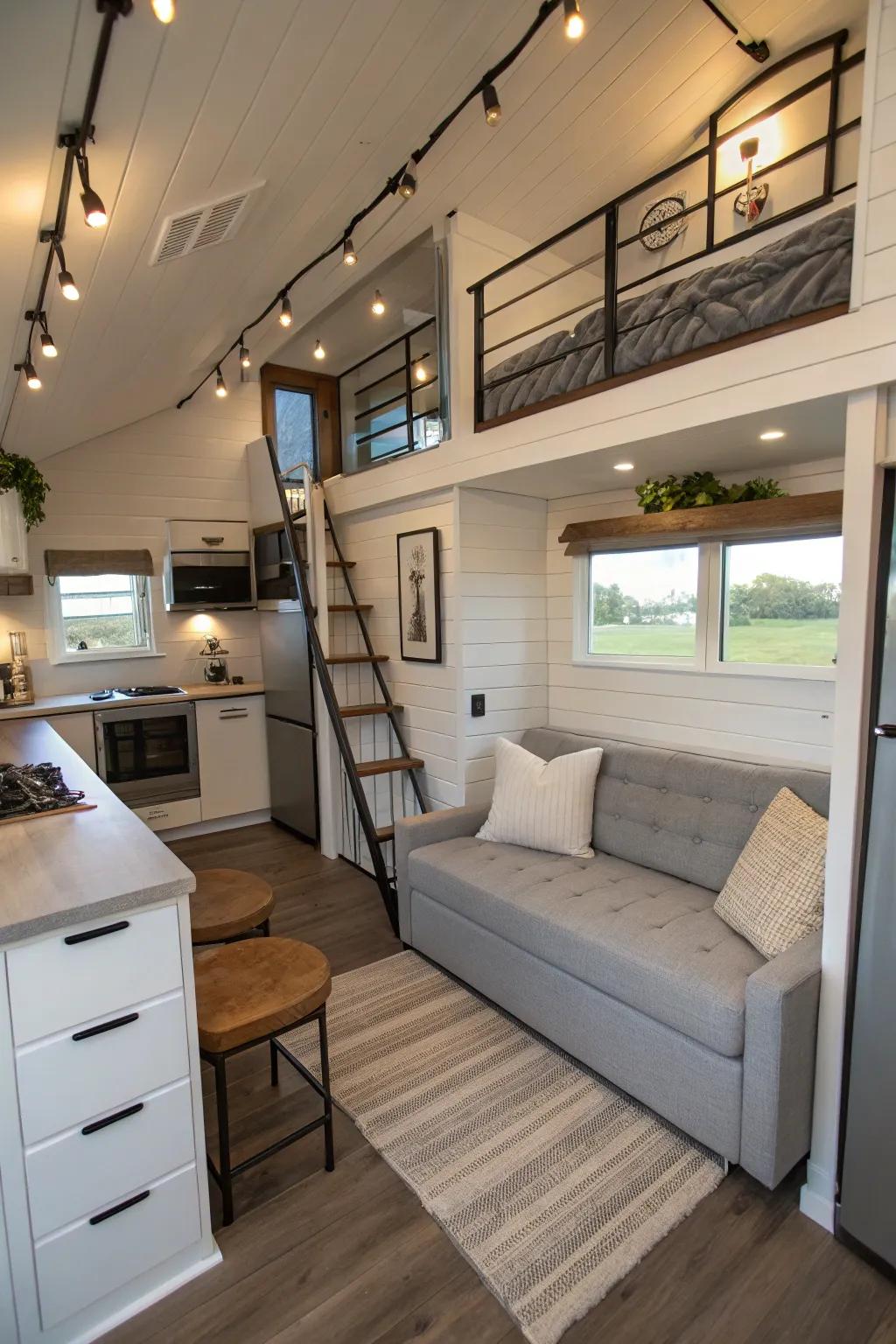
Maximizing space in a tiny home is a puzzle I love to solve. So often, clients come to me overwhelmed—not by the size of their dreams, but by the limitations of their square footage. I always tell them: Your furniture can be your secret weapon.
- Ottomans with hidden storage are perfect for tucking away extra linens or stashing board games.
- Beds with pull-out drawers underneath transform sleeping spaces into organized havens.
- Folding dining tables let you host friends, then disappear when not needed.
- Wall-mounted drop-leaf desks can create a functional office in the blink of an eye.
I once worked with the Thompsons, a creative young couple who wanted their common area to double as a guest room. We chose a convertible sofa bed and a nesting table set that could be rearranged for work, dining, or movie night—their space felt three times bigger just by letting each piece multitask!
Look around your own home. Are you choosing pieces that work just as hard as you do? Ask yourself if every item earns its spot. The right multi-functional furniture doesn’t just save space; it adds versatility and helps your home grow with your needs.
A few relevant products:
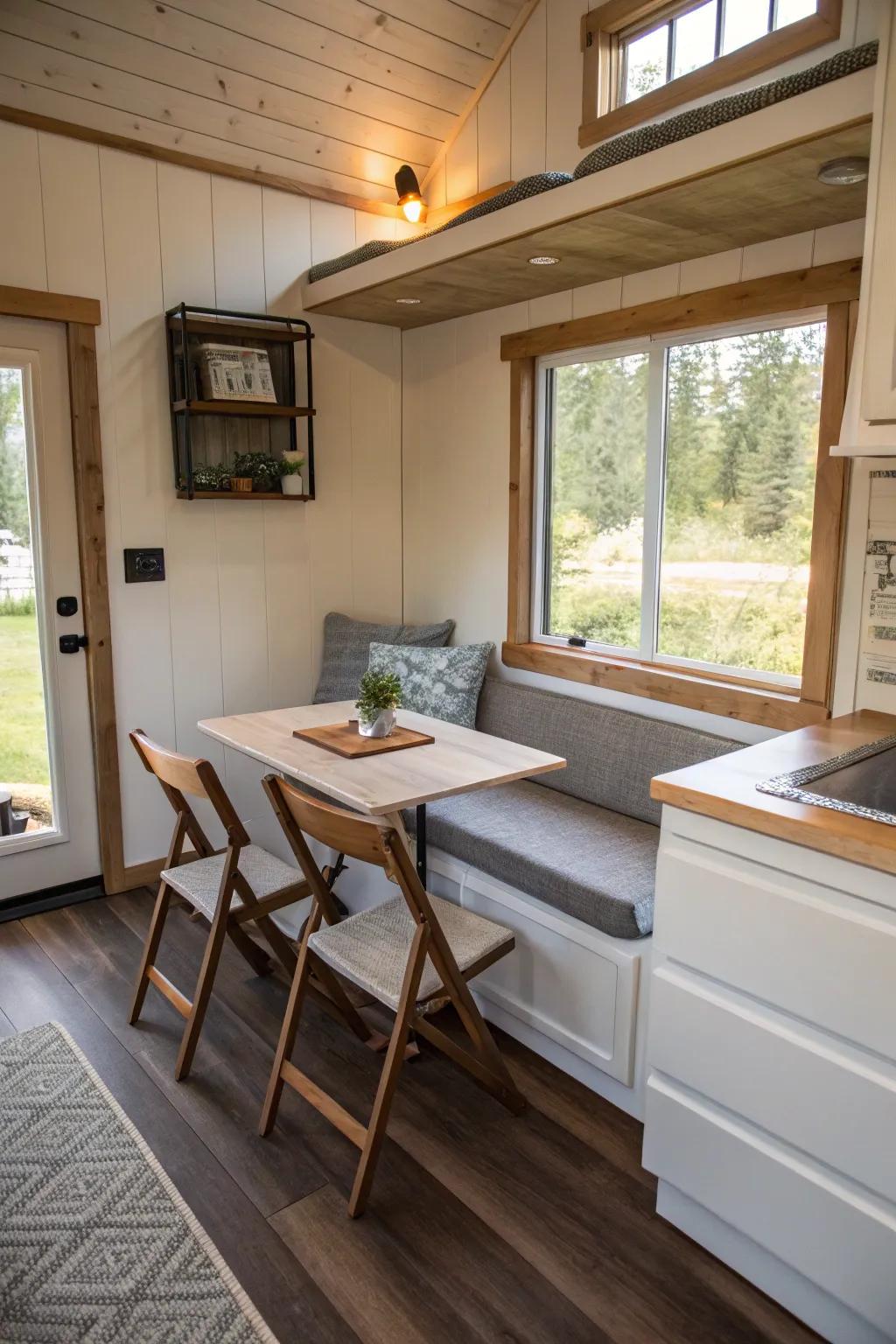
Tiny homes shine when their spaces pull double—or even triple—duty. I always encourage my clients to make every inch work for them, especially where they eat, lounge, and gather.
Here are a few ways to pack maximum versatility into your seating and dining:
- Choose furniture that folds or tucks away when not in use.
- Opt for built-in benches with hidden storage beneath the seat.
- Try a convertible sofa-bed for instant guest readiness.
- Use a slim, expandable table that can go from desk to dinner.
Every home I design becomes more joyful and relaxed when seating serves more than one purpose.
Products that could assist:
18. Meaning in the Details
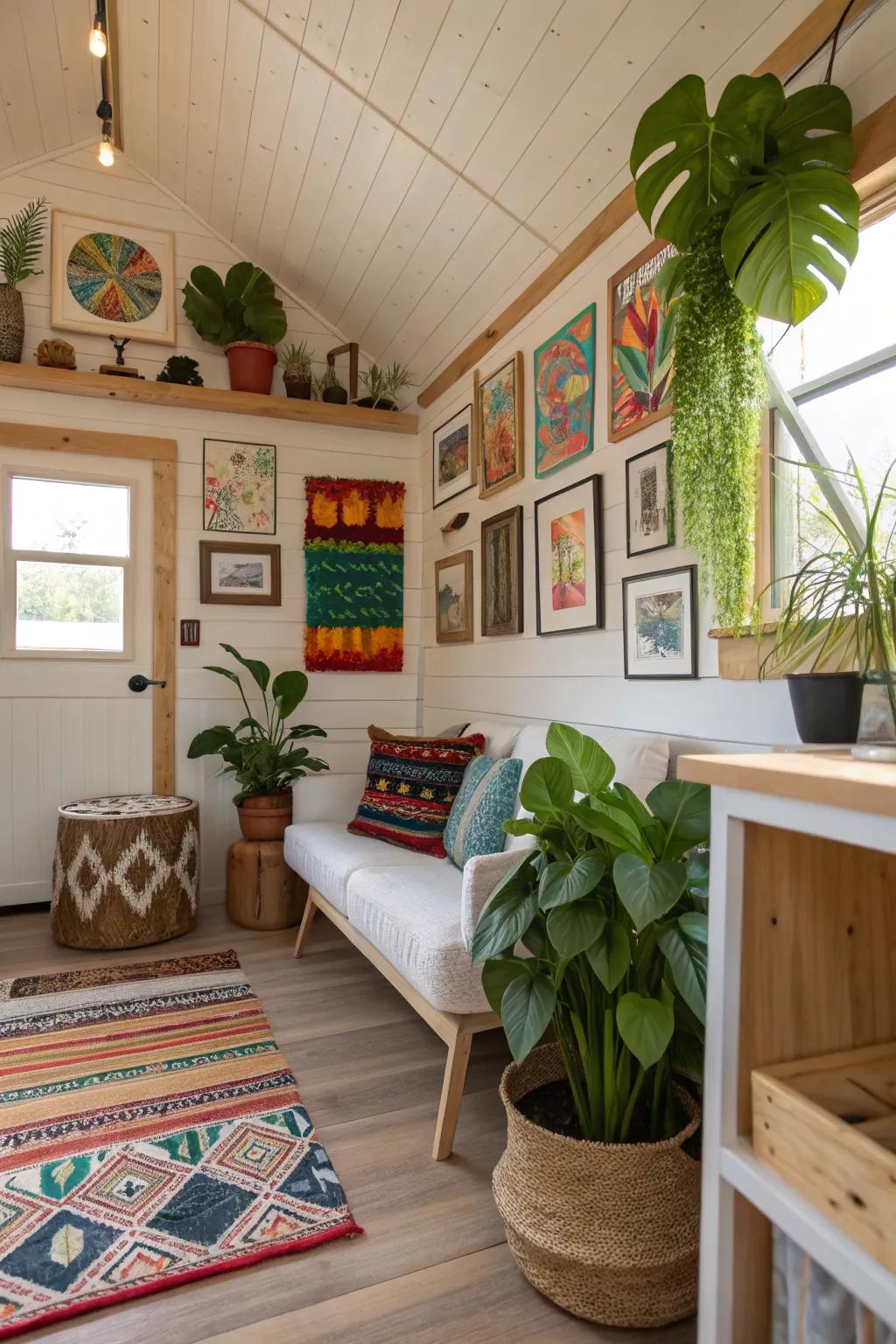
Home isn’t just where you are—it’s what surrounds you.
Adding art and greenery can transform a tiny house from a clever shelter to a deeply personal haven. It’s not about filling every inch—it’s about curating what truly speaks to you. I often recommend clients blend pieces that tell their story with natural elements for energy and warmth.
A custom art print or a handmade textile sets the mood, while a living plant brings in movement and life. When I worked with Sarah—a poet and teacher—she’d lost her creative spark after downsizing. We added a gallery wall of her favorite literary quotes and a trio of potted herbs by her window. Suddenly, inspiration (and fresh basil) was always within reach!
Plants are quiet companions in small spaces, but they need a thoughtful home. Here are my favorite ways to style greenery in a tiny house:
- Choose plants with varying heights for visual interest.
- Select species that thrive in your specific light conditions.
- Consider fragrant varieties to engage multiple senses.
Even a single trailing vine or a pop of color from a bold print can become the soul of your home.
Let your tiny home reflect your heart—one brushstroke, one leaf, one memory at a time.

